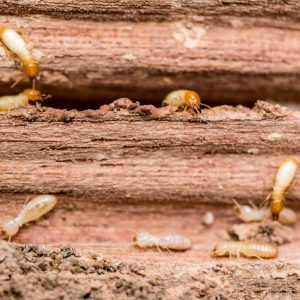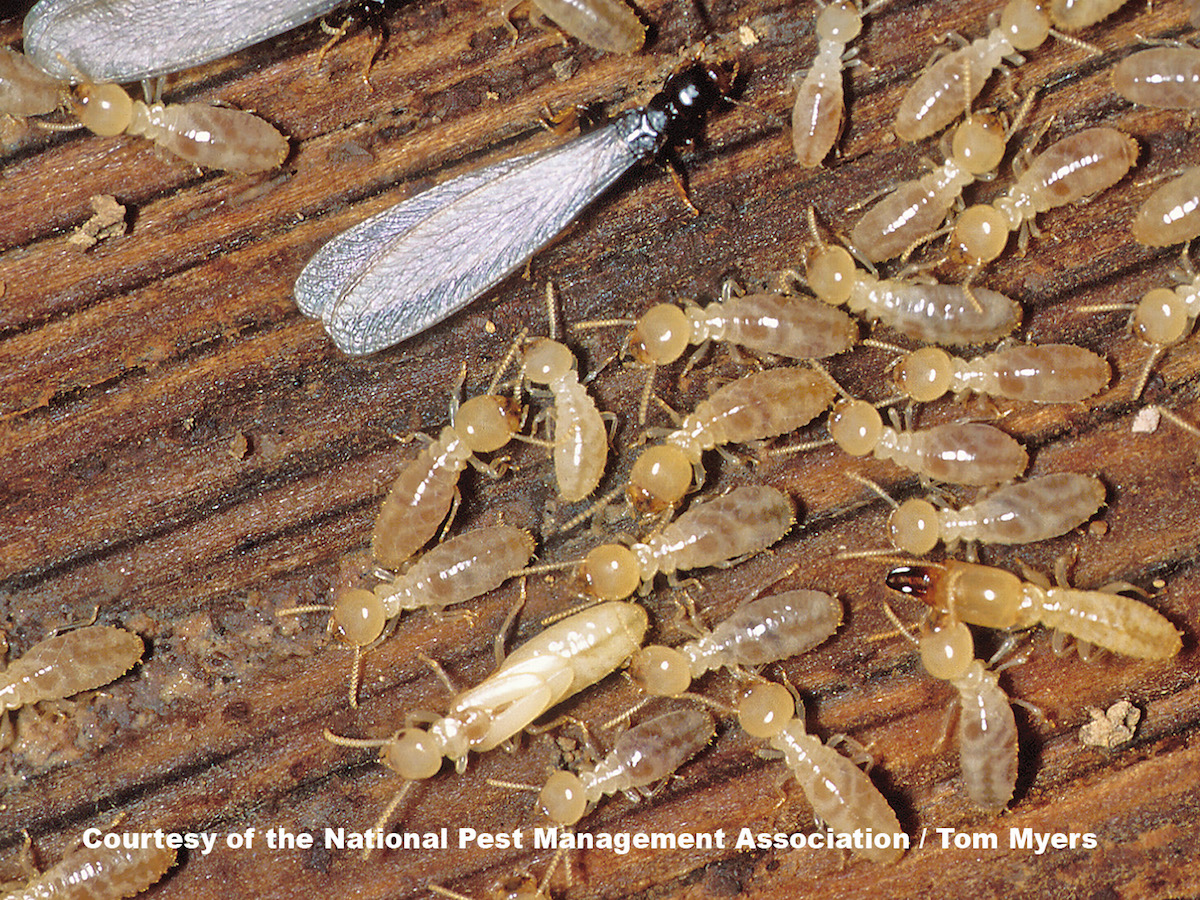Termite Control

Termites are highly destructive pests that can cause extensive damage to your home quite quickly. An average termite colony can consume approximately 1 ft. of a 2-by-4 beam in six months. Consequently, in less than 3 years, your home’s structural integrity will be severely affected.
As such, termite prevention is crucial to your home. Homeowners should seek termite control strategies that actively target termite colonies. These ‘offensive’ solutions vary based on termite types and the extent of the termite damage caused.
Should I Worry About Termite Infestations?
According to the National Pest Management Association, termite damage causes losses to billions of dollars in the United States. They feed on wood, books, insulation, swimming pool liners, living shrubs/trees, and other woody plants.
These pests infest buildings, making them very relevant in any home’s buying/selling process. Normally, a termite infestation or inspection report is a mandatory condition of the sale of any building.
In addition to the monetary aspect, imagine how emotionally traumatizing an experience it would be to have swarms of winged termites emerging from your house, feasting on your hard-earned investment!
Signs of Termite Infestation

Termites, unlike most pests, are quiet; they do not smell and are mostly active at night. Given this, it is difficult to know whether these little ‘creeps’ have breached your home.
However, there are some warning signs that you can look out for to protect your home from termites:
Frass Presence
This is some sawdust-like dust that piles up near wooden structures. Frass is a hallmark of pests such as carpenter bees, carpenter ants, and termites.
Bubbled-Up Walls or Floors
If you see some bubble-like textures that are somewhat soft to the touch on your floors or walls, it could be a sign that termites are devouring the wood underneath.
Small Wings (White)
This indicates that winged termites have found a new colony, as they shed wings when burrowing into the wood.
Mud Tubes
Check for grey or brown vertical lines (mud dauber nests in appearance) on your building’s foundation. This could be a termite infestation sign, as they use these tubes to access your house.
Termite Treatment Cost
In the U.S., the most expensive termite treatment is priced at $3000 on average (bear in mind that this is only an estimate, and various pest companies have different charges). However, the cost varies based on an array of factors, including your home’s size, the extent of termite damage, the location of the termite infestation, the method used for termite treatment, and more.
Termite control, like any other pest control issue, could be solved in a single visit or even require extensive solutions such as regular fumigation. Therefore, you would need to consult with a certified exterminator or professional pest control expert to ascertain the cost of the entire service.
What Factors Affect The Cost of Termite Treatment?
Before you start budgeting for pest control, it is best to seek professional advice from certified exterminators. The first step would be inviting them for a thorough inspection of your home.
An expert inspection from an exterminator will give you a better sense of the cost implication of termite control. Here are some factors at play in the overall price quote:
The Size of Your Home
Cost varies depending on the ground the exterminator will have to cover. As aforementioned, entire home treatment can go up to $3000 on average. Fumigation and tenting can be pricier, but simple applications will cost you much less.
Treatment Types
Termites can be removed from your home in several different ways. Chemical treatments are usually priced by linear ft. For basic treatments, the range is quite affordable. Bait treatments, which require a couple of visits, could be a bit more expensive.
The cost could increase for more extensive damages requiring fumigation and tenting. It all depends on the size of your household. Heat treatment, which is more organic as a solution, is slightly more upscale in price.
Termite Types
In the U.S., there are three predominant types: subterranean termites, damp-wood termites, and dry-wood termites. Each of these has a different cost implication.
What are The Various Types of Termites?
Drywood Termites
These termites feed on both damp wood and dry wood. Treatment costs for these ‘silent killers’ tend to be higher, given that they are more stubborn to get rid of. In most cases, your professional exterminator will use chemical gel or bait stations to kill these termite species.
Dampwood Termites
As the name suggests, these pests devour damp wood. The best approach to prevent or eradicate them would be to remove any dead or damp wood around your building. Be sure to get rid of stagnant water as well. The cost implication for this termite type is around average and affordable to most.
Subterranean Termites

These are the most common termite types in most U.S. households. As they dwell under the soil, tenting and fumigation does not work well in eradicating them. The best approach would be chemicals or baits. They are relatively cheaper to treat.
Types of Termite Treatment
An exterminator’s expert assessment determines the termite infestation’s severity, after which they will suggest the most ideal treatment options.
Termite Bait Stations
With this option, the exterminator places a couple of bait stations. The pests then take the baits to their termite colonies and die slowly. The professional would need to regularly inspect your premises to confirm that the termite baits are working.
Gas Fumigation
This is ideal for serious termite infestations. Your entire home is sealed with a tent, and toxic gas is pumped in. The gas takes out the entire termite’s swarm.
Chemical Treatments
Here, a special chemical is applied to the soil surrounding the pest infestation. Once the termites come into contact with the special pesticide, they automatically die.
Heat Treatment
Heat termite treatments are best suited for extensive termite infestations, heat treatment is a fantastic alternative to gas fumigation. The exterminators tent your home and heat it to over 100 degrees Fahrenheit. With the incredibly high heat, the pests are easily exterminated.
Preventing Termite Infestation
While there are methods to kill termites, it would be better to prevent them from invading your home in the first place.
Regular Inspections
Have professionals assess if you have a termite problem. This prevents them from ‘invading’ your home. Still, it also helps eradicate any termites that might have already found their way to your house before the situation worsens.
Sealing Foundation Cracks
This method ensures that you are not inviting termites in. You can hire a contractor to seal off any crevices or cracks.
Getting Rid of Dead Wood
Dead or rotting wood beckons termites to your property more than anything else. See that your property is clean, and remove any debris and wood that hasn’t been properly sealed from the weather.
To Sum Up
Prevent termite infestation by applying the best treatment and conducting regular termite inspections to keep away the wood-destroying organisms. Save yourself significant structural damage through continuous protection efforts to eliminate and keep off termites and pests.

Pingback: Tulsa Termite Inspection - do you need one? - BugDaddyOK